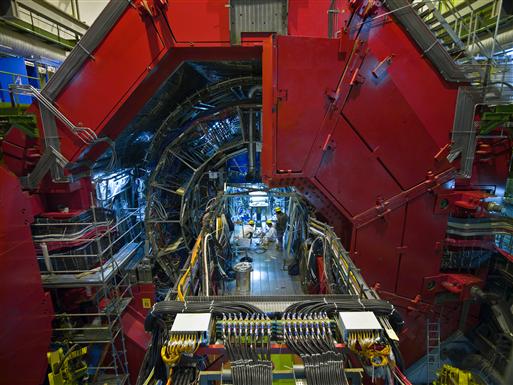Coordinator: Josè Javier Dobon Valiente
Phone: 049 8068436
Mail: Javier.Valiente@lnl.infn.it
CSN3 manages and finances experiments related to nuclear physics. The goal is the study of atomic nuclei, their constituents and their interactions. This helps to better understand the behavior of celestial bodies on the one hand, on the other it has direct applications in the medical and energy fields.
INFN LNL are involved in the research lines of nuclear structure and reaction dynamics (line 3), nuclear astrophysics and technological research (line 4) and in the scientific calculation of the ALICE experiment at CERN.
Index
National Responsible: Andrea Gottardo (INFN LNL), Silvia Leoni (INFN Milano)
Local Responsible : Alain Goasduff
Detector Galileo
Detector AGATA
Site: https://www1.lnl.infn.it/~gamma
Old site about European Gamma Ancillary detectors Network
The main GAMMA group activity is the spectroscopy of gamma rays emitted from excited nuclei, with the aim of investigating how protons and neutrons bind together to form atomic nuclei structure. The group performs experiments at LNL as well as in foreign laboratories. More in detail, the GAMMA group exploits world-level experimental setups at LNL. One of these is the high-purity germanium array GALILEO. It is a detector resident at LNL, which compounds high-efficiency germanium crystals with advanced digital electronics, allowing one to explore new nuclear properties. From 2022, LNL will host the gamma-ray tracking array AGATA. This array, composed by segmented germanium crystals enabling gamma-ray path reconstruction, represents the state of the art in gamma-ray spectroscopy. It is the result a large European collaboration. The GAMMA group takes care of its installation and exploitation to measure with unprecedented precision the atomic nuclei features.
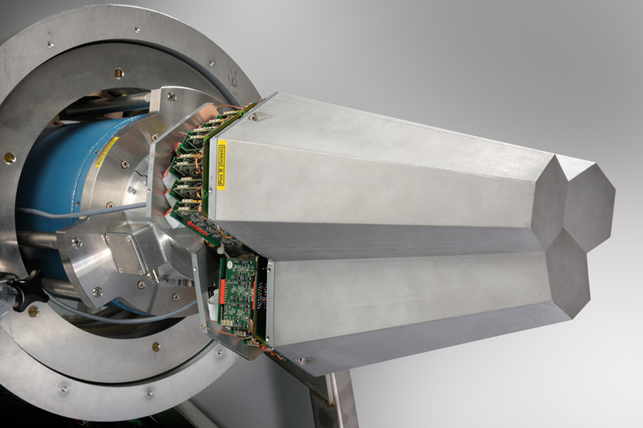
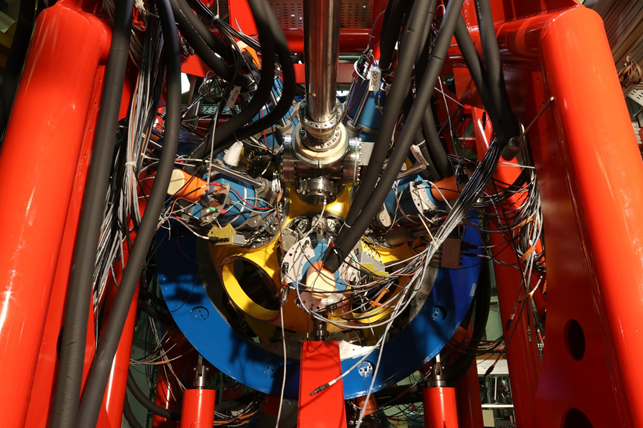
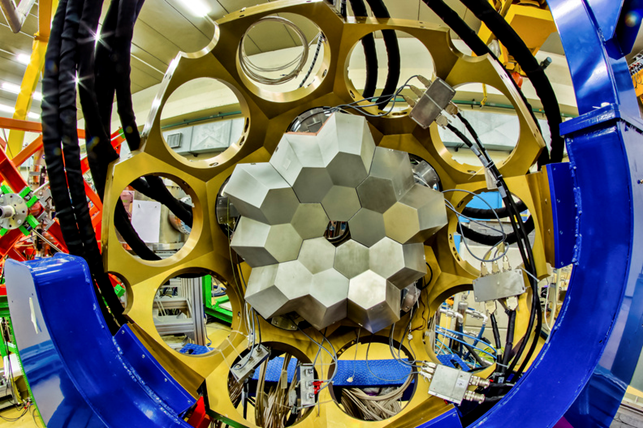
NUCLEX
National Responsible: Sandro Barlini (INFN Firenze), Ivano Lombardo (INFN Catania)
Local Responsible: Tommaso Marchi
The NUCLEX collaboration study the dynamics of the reactions induced by low (few MeV/nucleons) or intermediate energies (tens MeV/nucleons). The main purposes are to ensure the effects of the nuclear structure using charged projectile as probe and to achieve more information on the nucleus and nuclear matter properties away from stability.
At “low” energies (5-10 MeV/nucleons) the mean field rules the nuclear interactions and, in the case of central collisions an excited compound nucleus is formed. Its decays through evaporation and/or fission are described by statistical model. Those reactions are studied by the “SPES-GARFIELD” research line of the NUCLEX collaboration. Despite the good agreement between the experimental data and model predictions, recently some discrepancies between them are pointed out due to the structure of the interacting nuclei and/or of the compound nucleus (alpha-conjugated nuclei). Moreover, pre-equilibrium effects can contribute to such discrepancy. The GARFIELD+RCo array [1] (at LNL) with high angular coverage and high granularity permits the identification in charge and mass of the charged products in a large rang of charge and energy. In particular, in light system case it is possible to select very exclusive decay channels to accurately evaluate the statistical model prediction capability.
Considering the next production of radioactive beams with low intensity and low energy by SPES at LNL, the NUCLEX collaboration has developed an active target ATS (Active Target for SPES) in order to study elastic and anelastic scattering reactions and few nucleons transfer reactions. Ancillary detectors are used to have a better reconstruction of the reactions of interest. As an example, OSCAR hodoscope, developed by the NUCLEX collaboration [2], can be used. It is a modular detector made by two detection stages (SSSSD and silicon pad) allowing to identify low energy (circa 1 MeV/nucleon) particles thanks to the high acceptance. It can be used standalone or as an ancillary.
At intermediate energies (20-50 MeV/nucleon), both mean field and nucleon-nucleon collisions rule the reaction mechanisms. In the case of central collisions, a lot of reaction channels are opened, from the binary collisions to the multifragmentation. Transport models are used to describe them. The “FAZIA” research line of NUCLEX collaboration work on those studies and its main goal is to search for the nucleus and nuclear matter properties in extreme conditions of density and temperature. The experimental campaigns are devoted to study the nuclear matter equation of states (in particular the symmetry term) and the many bodies correlations. The FAZIA [3] detector, currently at GANIL, permits to look at the thermodynamics and at the dynamics of the exotic nuclei, exploring the isospin degrees of freedom of the nuclear matter. It is a modular detector completely based on custom digital electronics and represents the state of the art in terms of mass and charge identification capability and detection thresholds. The smallest piece of FAZIA is the “blocco” consisting of 16 telescopes Si-Si-CsI(Tl).
[1] M. Bruno et al., “GARFIELD + RCo digital upgrade: A modern set-up for mass and charge identification of heavy-ion reaction products”, EPJ A 49 (2013) 128; https://link.springer.com/article/10.1140/epja/i2013-13128-2
[2] D. Dall’Aquila et al., “OSCAR: A new modular device for the identification and correlation of low energy particles”, NIMA 877 (2018) 227; https://doi.org/10.1016/j.nima.2017.09.046
International collaborations:
Belgium: KU Leuven
Finland: Jyvaskyla
France: GANIL, LPC, IPNO
India: BARC (Mumbai)
Poland: INP Krakow, University of Warsaw
Russia: Moskow State University, Dubna
Turkey: Nevsehir University
Collaborazione ACTAR : J. Grinyer (GANIL), R. Raabe (Leuwen)
Detector Fazia
PRISMA-FIDES
National Responsible: Lorenzo Corradi (INFN LNL)
Local Responsible: Enrico Fioretto
Detector Prisma
PRISMA-FIDES is an experiment devoted to the experimental study of 1) binary reactions through the heavy-ion magnetic spectrometer PRISMA, and 2) fusion reactions at low energy with the PISOLO set-up, based on a beam electrostatic deflector. Both the set-ups are installed in the experimental halls of the Tandem XTU-ALPI-PIAVE accelerator complex and make use of the available high-quality beams.
The two research lines are strongly interrelated, as the transfer and the fusion processes near the Coulomb barrier are linked through important nuclear structure effects which influence the evolution of the reaction dynamics. In particular, the nucleon pairing interaction and the quantum tunnelling processes are connected in these reactions by coupled-channel effects.
PRISMA represents the state-of-the-art in the field of tracking spectrometers with a solid angle of about 80 msr, a magnetic rigidity of 1.2 Tm, and a mass resolution of 1/220. The large acceptance and ion-identification capability make PRISMA an ideal tool also for spectroscopic studies especially in the region of neutron-rich nuclei which can be populated with high cross section via multinucleon transfer reactions.
In the past years PRISMA was used in combination with the gamma arrays CLARA (2003-2008), AGATA Demonstrator (2010-2011) and, starting from the second half of 2021, it will be coupled to AGATA.
The electrostatic deflector of PISOLO rejects the beam with high efficiency, and allows to identify the fusion-evaporation residues in the DE-E-ToF detector telescope installed downstream. The ER are detected around 0o down to cross sections 0.5-1 mb. The simplicity of PISOLO makes it a powerful device, in spite of its small solid angle.
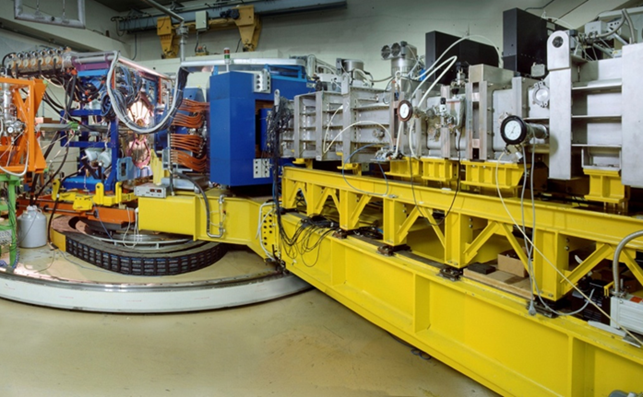
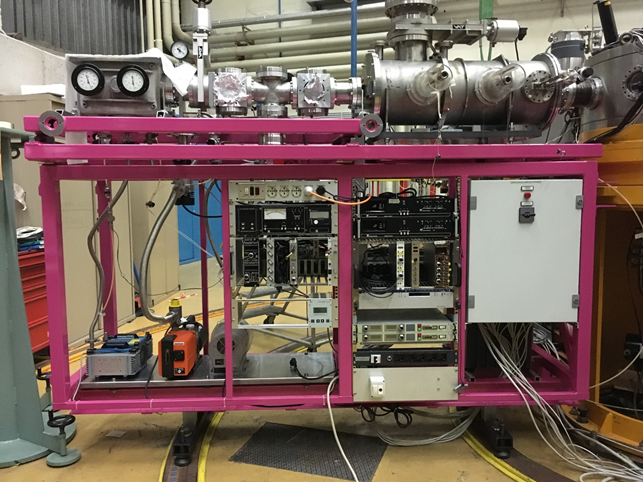
National Responsible: Cristian Massimi (INFN Bologna)
Local Responsible : Pierfrancesco Mastinu
Neutron Time-of-Flight (n_TOF) è un esperimento del CERN volto alla misura della sezione d’urto di reazioni indotte da neutroni attraverso la tecnica del tempo di volo. I neutroni vengono prodotti dal fascio primario di protoni da 20 GeV/c del PS (proton syncroton), nel complesso di acceleratori del CERN. L’ampio range di energia dei neutroni (dai meV ai GeV) e l’alta risoluzione energetica, permette di effettuare misure utili per diverse aree di ricerca come l’astrofisica nucleare (nucleosintesi degli elementi pesanti, nucleosintesi primordiale), le tecnologie nucleari emergenti (acceleratori reactor-driven, trasformazione delle scorie nucleari, reattori di IV generazione, reattori a fusione), medicina nucleare (misura di sezioni d’urto per la produzione di radioisotopi) e struttura nucleare (livelli nucleari, barriere di fissione, lunghezza di scattering dei neutroni).
I Laboratori Nazionali di Legnaro hanno contribuito allo sviluppo di scintillatori C6D6 a bassa neutron sensitivity, al monitor di fascio di neutroni, al calorimetro a 4 π (con un brevetto INFN come spin-off) e alla realizzazione di preamplificatori a reset attivo.
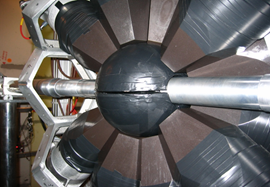
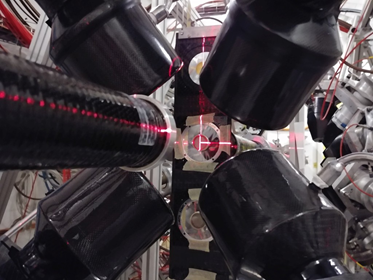
PANDORA
National Responsible: David Mascali (INFN LNS)
Local Responsible: Alessio Galatà
PANDORA is an interdisciplinary innovative project whose aim is to measure the decay rate, as a function of the ionization state, for β radionuclides (like 176Lu) involved in several astrophysical process (stellar nucleosynthesis) and cosmology (BBN, cosmochronometers). Radioactive species will be injected in a plasma produced inside a magnetic trap (reproducing stellar-like conditions in terms of ionization stages), where they will be ionized by energetic electrons. The trap will be equipped with a complete multi-diagnostic system, able to measure not only gamma rays following the β decay, but also the plasma self-emission (visible, X-rays, microwaves) and in turn deduce its parameters (density and temperature) with an unprecedented precision. The project is in the design phase, then the construction will follow. First measurements are expected by the end of 2023.
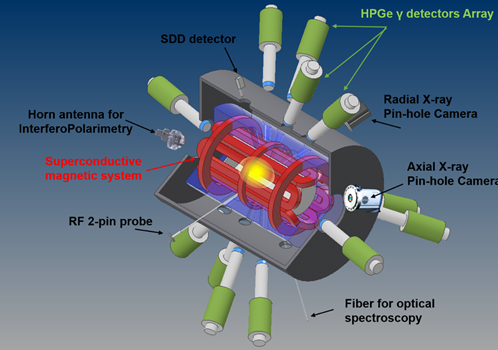
Spokesperson: Gianluca Imbriani (Federico II University of Napoli and INFN Napoli)
Local Responsible: Valentino Rigato
The LUNA (Laboratory for Underground Nuclear Astrophysics) main aim is to investigate nuclear fusion reactions that generate most of the stellar energy and allowed the synthesis of the elements in stars and in the primordial Universe. Such reactions have a very low cross section at energies of astrophysical interest and are thus very difficult to be measured in a laboratory at the Earth’s surface, where the cosmic background would mask the feeble signal. During the last 25 years, LUNA installed two accelerators (LUNA 50 and LUNA 400) in the underground laboratories of LNGS and measured a few key reactions of the Hydrogen burning and of primordial nucleosynthesis. In the next future, a new accelerator (LUNA MV) that will allow to measure reactions of the Helium and Carbon burning cycles will be installed.
For the LUNA400 and LUNA MV programs the Laboratori Nazionali di Legnaro are deeply involved in the preparation and characterization of nuclear solid targets in three main activities:
- Thin films deposition of stable, high purity and radiation hard targets:
Reactive pulsed plasma deposition of stable nitrides and oxides a for 16O(p,γ)17F and 14N(p,γ)15O reactions
Ultra-pure Ta backings HiPIMS deposition and plasma treatments to reduce neutron and gamma–ray background.
E-beam evaporation (single isotopic materials) for 27Al(p,α)24Mg and 13C(α,n)16O reactions
Study of Highly Oriented Pyrolitic Graphite targets for 12C(12C,p)23Na and 12C(12C,α)20Ne reactions. - Characterization of physical properties before irradiation and after accumulation of Coulomb charge in nuclear cross section measurements campaigns:
Ion Beam Analysis for composition, depth profile and trace elements analysis using the nuclear techniques EBS, NRA, PIGE, PIXE at the LNL Van de Graaff AN2000 and CN accelerators
SEM electron microscopy for morphology studies
Atomic force microscopy for topography and roughness studies - Beam damage study with Monte Carlo modelling of ion-surface interaction.
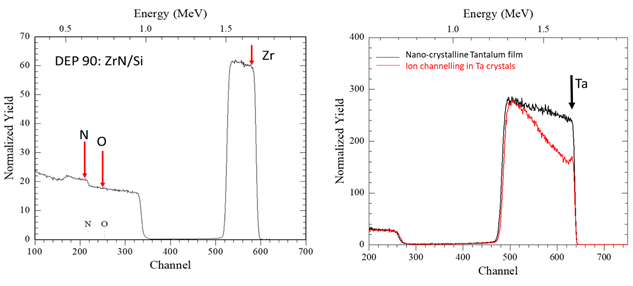
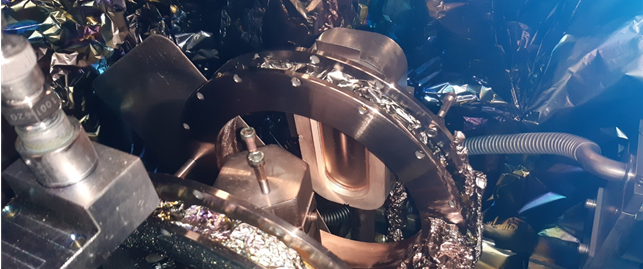
ALICE
National Responsible: Masera (INFN Torino)
Local Responsible: Massimo Biasotto
ALICE (A Large Ion Collider Experiment) is one of the four experiments of LHC (Large Hadron Collider) hosted at CERN. It is designed to study the physics of matter at extreme energy densities: the collisions of beams of accelerated lead ions in LHC generate extreme temperatures and densities, recreating in laboratory conditions like those just after the Big Bang. Only under these extreme conditions a special phase of matter called “quark-gluon plasma” forms, and ALICE is dedicated to the study of this phase and its properties. This is possible thanks to the giant ALICE detector, 26 m long, 16 m high, 16 m wide and weighing 10000 tonnes, designed to measure, in the most complete way possible, the particles produced at its center, where the LHC beams collide. The detector produces a huge amount of data which are then distributed for analysis to a large “computing grid” spread in many centers around the world. LNL hosts one of these computing centers dedicated to the analysis of LHC data, both for ALICE and CMS experiments.
